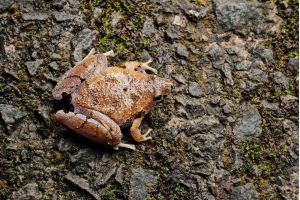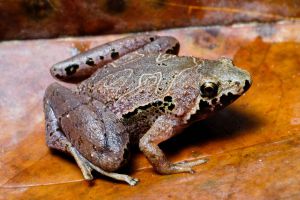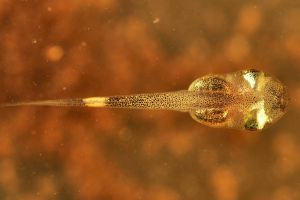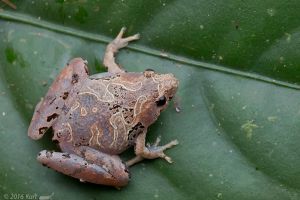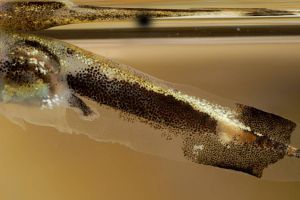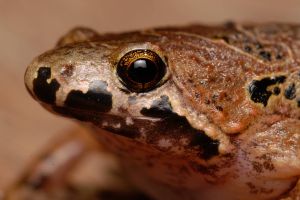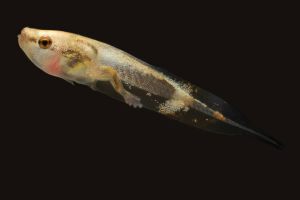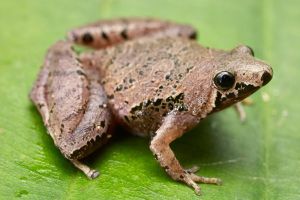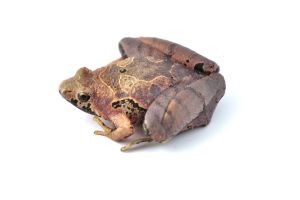
Frogs of Borneo

Frogs of Borneo

Frogs of Borneo

Frogs of Borneo

Frogs of Borneo

Frogs of Borneo

Frogs of Borneo

Frogs of Borneo

Frogs of Borneo

Frogs of Borneo

Frogs of Borneo
Bornean Families
Microhyla:
malang
Borneo Narrow-mouthed Frog
Microhyla malang is a locally common forest-floor species found in both primary and secondary rainforest. It is closely related and similar in coloration to Microhyla nepenthicola. The are sympatric. M. nepenthicola is distinctly smaller but M. nepenthicola females almost fall into the size range of M. malang males and can potentially be confused with M. malang. The reproductive modes of the two species are very different: M. malang has exotrophic tadpoles in ponds, M. nepenticola has endotrophic tadpoles in phytotelmata.
This is a medium-sized species of Microhyla, with adult males measuring approximately 18 to 22 mm in snout–vent length (SVL), females grow up to 25–26 mm. The snout is obtusely pointed and appears rounded in profile. The first finger is notably short, being less than one-fourth the length of the third finger. The tips of the three outer fingers are weakly dilated, forming small disks that display a median longitudinal groove on their dorsal surfaces. A single outer palmar tubercle is present.
The tibiotarsal articulation is long, reaching well beyond the tip of the snout when the hind limb is stretched forward. The toe tips also are dilated into disks, each bearing a dorsal median groove. The extent of webbing between the toes varies: on the outer side of the second toe, one phalanx is free of webbing; on the inner side of the third toe, approximately two and two-thirds phalanges are free; on the outer side of the third toe, between one and a half and one and two-thirds phalanges are free; the inner and outer sides of the fourth toe each have three phalanges free; and one phalanx is free on the inner side of the fifth toe. Both inner and outer metatarsal tubercles are present. The eyelid lacks spines.
The top of the snout is not distinct in color from the brown forehead. Overall, the dorsal colors range from reddish-brown to greaish-brown with dark markings. The jaws bear distinct black blotches. A vertebral stripe is absent on the back, but a lobed dark marking is usually present. The dark dorsal markings are typically outlined in white. A cream-colored stripe runs below the supratympanic fold but is not bordered by black above. A narrow, broken black lateral stripe extends from above the arm to about half the length of the trunk.
These frogs typically remain hidden under leaf litter and will leap away in large jumps when disturbed. Males congregate around pools to form choruses. At dusk, a single male may begin a chorus with a series of pleasant, “crackling” notes. Gradually, more males join in, and after about a minute the chorus stops—only to resume again after a variable pause.
Microhyla borneensis reproduces in temporary, stagnant pools of various sizes and depths. The egg clutches float on the water suface as a one-layerd film of very small eggs. Its tadpoles are suspension feeders, occupying the mid-water column. The mouth is terminal, and they lack keratinized mouthparts. The spiracle is medially positioned on the venter. Their coloration is distinctive and includes, among other features (see image), a white spot and a dark cross-band in the posterior third of the tail. The tail ends in a thin, sharply pointed flagellum. When undisturbed, tadpoles hover almost motionless in the water column, maneuvering gently using the tail flagellum. At night, they are observed more frequently near the water surface than during the day. Tadpoles are fragile. They reach a maximum total length of approximately 16 mm.
Version tracking
-
07.08.2025
updated images and text
